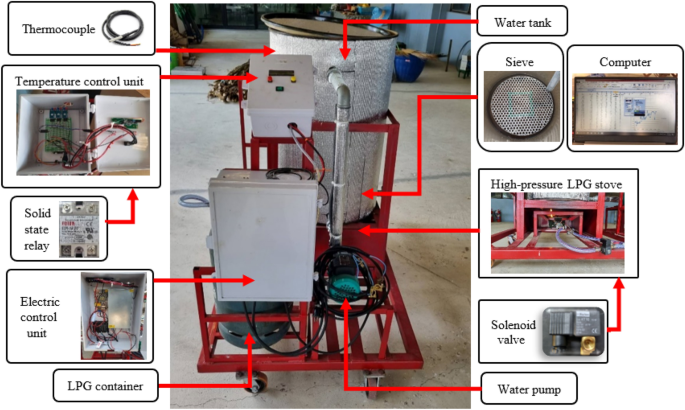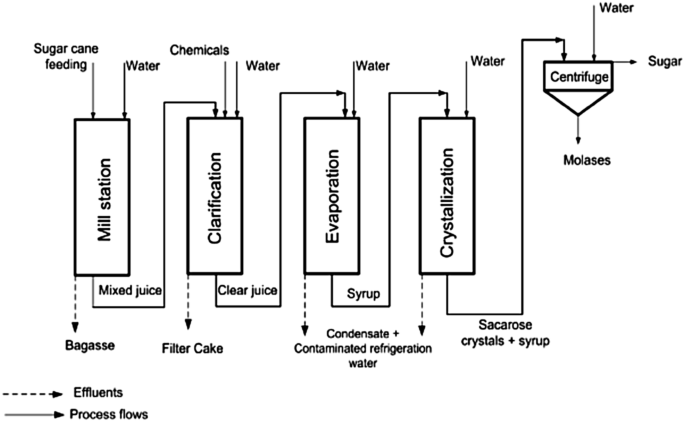Exploring the Environmental Impact of Products From Sugarcane
Exploring the Environmental Impact of Products From Sugarcane
Blog Article
Discover the Ingenious Benefits of Products From Sugarcane for Sustainable Living
Sugarcane has become a crucial resource in the mission for sustainable living. Its diverse applications cover naturally degradable packaging, renewable resource, and much healthier food choices. As markets look for environment-friendly alternatives, sugarcane's versatility supplies encouraging options. The real possibility of sugarcane extends past its present uses. Exploring its cutting-edge benefits can disclose new pathways toward a much more sustainable future. What various other opportunities might this remarkable plant hold?

The Increase of Sugarcane as a Lasting Resource
As international awareness of ecological concerns grows, sugarcane has become a popular lasting source. This flexible plant provides a selection of benefits that contribute to eco-friendly techniques. Sugarcane is an eco-friendly resource, capable of growing in varied environments while absorbing carbon dioxide, thereby mitigating greenhouse gas discharges. Its quick development cycle permits frequent harvesting, leading to a continual supply of raw material.Additionally, sugarcane cultivation commonly calls for less water compared to other plants, making it a reliable choice in water-scarce regions. The byproducts of sugarcane, such as bagasse and molasses, can be repurposed for different applications, decreasing waste and advertising round economic situation principles. Advancements in agricultural practices have actually led to even more lasting farming approaches, additionally improving sugarcane's environmental profile. As customers progressively seek sustainable choices, sugarcane stands out as a practical option for those devoted to lowering their eco-friendly impact.
Eco-friendly Product Packaging Solutions
Exactly how can biodegradable packaging options change the method consumers approach sustainability? By using sugarcane-based materials, these ingenious services offer a compelling choice to typical plastics. Naturally degradable product packaging made from sugarcane disintegrates naturally, considerably reducing landfill waste and greenhouse gas emissions. As consumers come to be progressively knowledgeable about their environmental effect, the demand for lasting product packaging remains to rise.These sugarcane-derived items not just offer practical objectives but additionally straighten with eco-conscious customer values. They give a concrete means for people and companies to add to a round economic situation, promoting resource performance and decreasing ecological footprints. Furthermore, as industries embrace biodegradable alternatives, they promote a culture of sustainability that resonates with an expanding demographic seeking responsible choices.In significance, eco-friendly packaging options from sugarcane represent a crucial step onward in lasting methods, equipping customers to make environmentally friendly decisions without sacrificing benefit or high quality.
Renewable Resource Generation From Sugarcane
A considerable section of sustainable energy generation can be originated from sugarcane, showcasing its convenience beyond standard farming uses. Sugarcane biomass, including bagasse and leaves, is a powerful resource for bioenergy manufacturing. This biomass can be converted into biofuels such as ethanol, which functions as a cleaner option to nonrenewable fuel sources. In addition, the burning of sugarcane results creates vapor and electricity, offering an energy source for sugar mills and close-by communities.The cultivation of sugarcane also adds to carbon sequestration, as the plants absorb co2 during their development cycle. By utilizing sugarcane for energy, waste is minimized, and lasting methods are urged. This renewable resource approach not only sustains energy needs yet likewise advertises rural advancement, creating work in bioenergy markets. On the whole, sugarcane stands out as a crucial player in the change to sustainable energy services, aligning with global initiatives to decrease carbon footprints.

Eco-Friendly Textiles and Fabrics
Environment-friendly textiles and materials acquired from sugarcane provide a promising option to typical products. These naturally degradable choices not just decrease ecological effect but also use sturdiness and efficiency comparable to standard materials. Lasting manufacturing procedures further improve their allure, making them an essential part of a sustainable way of living.
Naturally Degradable Textile Choices
Why is the change toward biodegradable fabric choices crucial for sustainable living? The enhancing awareness of environmental destruction has motivated a look for alternatives to traditional fabrics, which typically contribute to contamination and waste. Eco-friendly textiles, stemmed from renewable resources such as sugarcane, supply a promising option. These products decay normally, lowering land fill buildup and reducing ecological effect. In addition, they can aid reduced carbon impacts and reliance on nonrenewable fuel sources. As customers become extra eco-conscious, the need for sustainable textiles grows, encouraging producers to innovate and invest in biodegradable choices. This change not just sustains lasting methods however additionally cultivates a circular economic situation, leading the means for an extra liable approach to fashion and fabric manufacturing.
Resilience and Performance
When evaluating environmentally friendly textiles and fabrics, sturdiness and performance are essential aspects. Sugarcane-derived materials show remarkable toughness and strength, making them appropriate for various applications. These fabrics commonly display premium moisture-wicking buildings, which improve comfort in everyday wear. Furthermore, their natural fibers add to breathability, making certain that garments stay fresh and wearable even sought after conditions. The efficiency of sugarcane-based fabrics extends to their resistance to wear and tear, allowing items to maintain their honesty gradually. In addition, these green textiles can be treated to improve UV defense and stain resistance, satisfying the practical requirements of customers without compromising sustainability. Inevitably, sugarcane fabrics supply an unified equilibrium of sturdiness and efficiency, interesting eco conscious individuals.
Sustainable Manufacturing Procedures
The excellent durability and efficiency of sugarcane-derived fabrics are enhanced by sustainable manufacturing procedures that prioritize ecological responsibility. These procedures make use of sustainable resources, reducing reliance on nonrenewable fuel sources and minimizing carbon footprints. By harnessing the spin-offs of sugarcane farming, manufacturers can produce environment-friendly materials while promoting waste reduction. Advanced techniques, such as water-efficient dyeing and eco-friendly therapies, further boost the sustainability of these fabrics. Additionally, the use of safe chemicals warranties that the production procedure does not hurt communities or human wellness. This commitment to sustainability not just interest environmentally mindful consumers yet likewise supports local economies by promoting sustainable agricultural techniques. In general, sugarcane-derived textiles represent a considerable step in the direction of a greener future in the apparel industry.
Sugarcane-Based Biofuels and Their Effect

Sugarcane-based biofuels have actually become a considerable alternate energy source, offering an eco-friendly option to the globe's growing power demands. These biofuels, originated from the Full Article fermentation of sugarcane juice or molasses, present an even more lasting choice compared to fossil gas. Their manufacturing procedure generates lower greenhouse gas emissions, adding to environment modification mitigation efforts.Additionally, sugarcane biofuels can improve power safety and security by diversifying energy resources and decreasing dependancy on imported oil. The growing of sugarcane additionally advertises rural growth, developing jobs and boosting neighborhood economies.However, issues relating to land use and food competition continue, as boosted biofuel production may affect food supply chains. Lasting agricultural practices are important to stabilizing these contending rate of interests and ensuring that biofuel manufacturing does not undermine food safety. Generally, sugarcane-based biofuels represent an appealing avenue for a greener power future, offered that their social and environmental implications are thoroughly handled.
Healthier Alternatives: Sugarcane in Food Products
While many consumers seek much healthier options in their diet plans, sugarcane products provide a healthy alternative to fine-tuned sugars and sweetening agents. Stemmed from the all-natural extraction of sugarcane juice, these products maintain vital nutrients, consisting of minerals and vitamins, that are typically shed in processed sugars. Sugarcane contains antioxidants and dietary fiber, adding to general health and wellness and wellness.Many health-conscious people are transforming to sugarcane syrup and jaggery, which offer a reduced glycemic index compared to traditional sugars, making them suitable for those handling blood glucose degrees. Furthermore, sugarcane-derived sweeteners can improve the flavor of various dishes without the negative effects connected with artificial additives.This change towards natural artificial sweetener not just promotes better dietary choices but also lines up with sustainable living techniques, as sugarcane is a renewable resource. For that reason, sugarcane products are becoming desirable alternatives in the domain of food.
The Future of Sugarcane in Sustainable Technologies
The future of sugarcane is positioned to include ingenious applications that extend beyond conventional usages. Its prospective as a source for eco-friendly packaging solutions and eco-friendly power sources highlights its function in lasting techniques. Discovering these advancements could significantly affect environmental conservation and source monitoring.
Biodegradable Packaging Solutions
An increasing variety of firms are transforming to naturally degradable packaging services originated from sugarcane as an appealing choice to typical plastics. These cutting-edge products, typically made from sugarcane fibers and bioplastics, disintegrate normally, minimizing the resilient ecological effect related to conventional plastic waste. By using renewable energies, sugarcane-based product packaging adds to a more sustainable manufacturing cycle, straightening with global initiatives to deal with contamination and environment change. Additionally, these solutions often keep the durability and performance required for numerous applications, from food containers to shipping products. As customer need for environmentally friendly choices grows, businesses adopting sugarcane product packaging not only enhance their brand name picture yet likewise play a pivotal function in fostering a circular economic climate, leading the way for a greener future.
Renewable Resource Sources
Eco-friendly product packaging remedies are simply one aspect of the wider potential of sugarcane in advertising sustainability. An additional significant application hinges on sustainable power resources. Sugarcane is a functional crop that can be utilized to produce biofuels, such as ethanol, which works as a cleaner alternative to fossil gas. The fermentation process of sugarcane juice returns ethanol that can power cars and create power. Additionally, the results of sugarcane handling, like bagasse, can be utilized to create biomass power, using a lasting and efficient method to harness energy. This twin role as both a source of biofuel and biomass underscores sugarcane's potential in decreasing carbon emissions and supporting a change to a more lasting power landscape in the future.
Often Asked Concerns
How Is Sugarcane Collected Sustainably?
Sugarcane harvesting can be lasting through techniques like hands-on cutting, which minimizes dirt disturbance, and making use of equipment that reduces fuel consumption (Products From Sugarcane). Plant rotation and incorporated pest administration additionally enhance environmental health and promote long-lasting dirt fertility
What Are the Environmental Influences of Sugarcane Farming?

Can Sugarcane Products Be Reused?
The question of whether sugarcane products can be recycled reveals a favorable overview. Many sugarcane-derived products, such as bioplastics and packaging, are made for recyclability, adding to a more lasting waste administration method within environmental factors to consider.
Are There Any Downsides to Using Sugarcane-Based Products?
The drawbacks of using sugarcane-based items include prospective land usage competitors with food plants, difficulties in massive production, and worries about the environmental effect of monoculture farming techniques, which can diminish biodiversity and dirt health and wellness.
How Does Sugarcane Farming Affect Citizen Communities?
Sugarcane farming impacts neighborhood areas by supplying employment possibility and boosting neighborhood economic situations. It their explanation can also lead to land conflicts and ecological concerns, affecting agricultural practices and neighborhood health and wellness, requiring a balanced method to growth. Developments in agricultural practices have actually led to even more sustainable farming methods, additionally boosting sugarcane's environmental account. Additionally, the burning of sugarcane by-products produces heavy steam and electrical power, providing a power source for sugar mills and close-by communities.The farming of sugarcane likewise contributes to carbon sequestration, as the plants take in carbon dioxide throughout their development cycle. By utilizing sugarcane for power, waste is decreased, and lasting techniques are learn this here now motivated - Products From Sugarcane. Sugarcane contains anti-oxidants and nutritional fiber, adding to general health and wellness.Many health-conscious people are turning to sugarcane syrup and jaggery, which give a lower glycemic index contrasted to traditional sugars, making them ideal for those taking care of blood sugar levels. Additionally, the by-products of sugarcane handling, like bagasse, can be made use of to generate biomass power, providing a efficient and lasting approach to harness power
Report this page